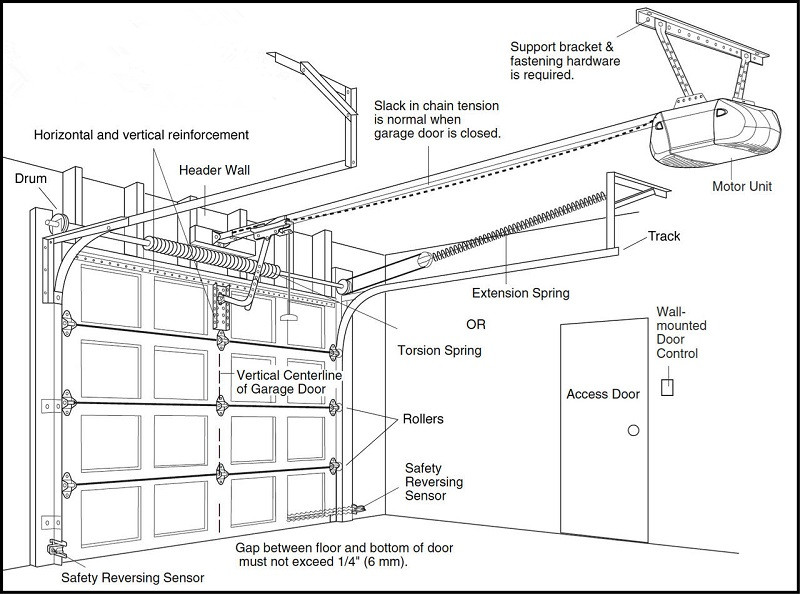Most people use their garage doors every day to leave and enter their homes. With such frequent operation, that means you likely open and close your garage door at least 1,500 times per year. With so much use and dependence on your garage door, do you even know how it works? Most homeowners likely don’t understand how garage door openers work and only note their garage door system when something unexpectedly breaks.
But by understanding the mechanics, parts and operations of your garage door system, you can better identify worn-out hardware early on, understand when you require garage door maintenance or repairs, and communicate more effectively with garage door specialists.
Most homes have a sectional overhead garage door, that glides along a track using rollers located on the ceiling of the garage. To assist the door’s movement, the door is attached to a garage door opener by a curved arm. When prompted, the motor directs the movement of the door open or closed using the torsion spring system to counterbalance the weight of the door, allowing safe and steady motion.
Garage Door Hardware System
While the operations of your garage door system seem simple enough, several pieces of hardware work together simultaneously to ensure dependable and smooth functionality:
1. Springs: Most garage doors feature a torsion spring system. The torsion springs are large springs installed on the top of the garage door that wind and unwind in a controlled motion to open and close the door while sliding into a channel. Typically, torsion springs last up to 10 years.
2. Cables: The cables work alongside the springs to lift and lower the door, and are made from braided steel wires. The thickness of your garage door’s cables is determined by the size and weight of your door.
3. Hinges: Hinges are installed on the garage door panels and allow the sections to bend and retract as the door opens and closes. It’s recommended that larger garage doors have double hinges to help hold the door while it’s in an open position.
4. Tracks: There are both horizontal and vertical tracks installed as part of your garage door system to assist with movement. Thicker steel tracks mean your garage door can better support the weight of the door and resist bending and warping.
5. Rollers: To move along the track, your garage door uses steel, black nylon or reinforced white nylon. Nylon allows for quieter operation. Proper rollers that are cared for and lubricated will easily roll along the track and not slide.
6. Reinforced Struts: The struts help support the weight of double garage doors while in an open position for extended periods of time.
7. Weatherstripping: Located between the door sections, on the exterior frame and along the bottom of the garage door, weatherstripping is responsible for maintaining energy efficiency and insulation and preventing exterior elements from entering your garage, like moisture, pests and debris.


